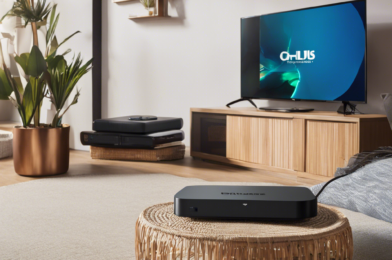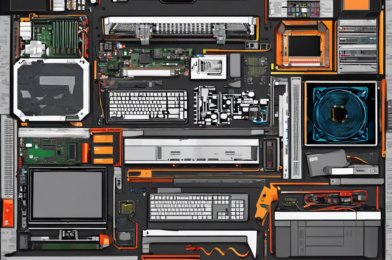The world of smart home technology is ever-evolving, and 2024 promises to bring even more innovative and convenient gadgets to homeowners seeking a more connected and efficient living space. From voice-activated lighting to app-controlled security, the possibilities for creating a smart home are endless. So, what are the must-have gadgets for those looking to embrace the future and transform their house into a haven of modern convenience?
Firstly, a smart speaker is a must-have for any smart home. Devices like the Amazon Echo or Google Home act as a central command for many other connected devices, allowing you to control them with your voice. With a simple voice command, you can play music, get the news, control your lighting, and even order a pizza. These speakers are constantly evolving and improving, with new features and skills being added all the time.
Another essential component is a smart thermostat. This allows you to control your home’s temperature from your phone, and many can even learn your preferences and automatically adjust the temperature based on your daily routine. This can lead to significant energy savings, as well as a more comfortable home environment. For example, the Nest Learning Thermostat can remember your preferred temperature settings and create a personalized schedule, ensuring your home is always welcoming and energy-efficient.
No smart home is complete without a robust security system, and there are now numerous options for app-controlled security cameras and motion sensors. Being able to monitor your home while you’re away provides invaluable peace of mind. Many systems will alert you to any unusual activity, and some even offer two-way audio, allowing you to speak to delivery persons or pets from afar.
The possibilities for creating a smart kitchen are also exciting, with connected appliances offering new levels of convenience. Smart refrigerators can now keep an inventory of your food, suggest recipes, and even order groceries, while smart ovens and stovetops can be controlled remotely, allowing you to start dinner on your way home from work.
With these must-haves and the wide range of other smart devices available, you can create a home that’s not only connected and convenient but also tailored to your unique needs and preferences. So, why wait? Start planning your smart home transformation and embrace the future of modern living.
When it comes to lighting, smart bulbs offer both convenience and a unique way to enhance your home ambiance. With app or voice control, you can dim the lights, change their color, or set automated schedules, all without needing to get up from the sofa. This is ideal for setting the mood for a movie night or winding down with a soft, warm glow before bed.
For the eco-conscious homeowner, smart plugs are a simple way to make any appliance more energy-efficient. These plugs can be controlled via an app or voice assistant, allowing you to turn devices on and off remotely, and even set automatic schedules. This is perfect for lamps, fans, or any appliance that you might want to turn off when not in use, helping to reduce energy waste and lower your utility bills.
Smart blinds and curtains are also a great way to automate your home, offering both convenience and added security. These window treatments can be set to open and close at certain times of the day, giving the impression that someone is home even when you’re away. They also provide an easy way to wake up with the sun, and some models can even adjust throughout the day to maximize natural light and reduce glare.
Lastly, a smart water leak detector is a small but mighty addition to any smart home. These devices can alert you to potential leaks or flooding, helping to prevent costly water damage. Placed near washing machines, dishwashers, or sinks, they will send an alert to your phone at the first sign of a leak, allowing you to take action quickly and minimize any potential damage.
With these gadgets and the ever-growing Internet of Things, the smart home of your dreams is well within reach.









